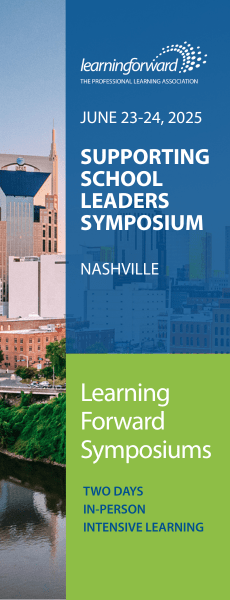TOOLS
Do your materials meet English learners' needs?
By Crystal Gonzales and Renae Skarin
Categories: College- and career-ready standards, English learners, Instructional materials/curriculum, Outcomes, Reaching all studentsApril 2019
Vol. 40 No. 2
There is substantial evidence documenting the impact of high-quality, educative learning materials on teacher practices and student learning, yet this evidence has not translated widely into more equitable learning opportunities for all students.
English learners tend to have less access to intellectually rich, grade-level content and instructional materials. With most English learners receiving instruction for math and English language arts alongside their non-English learner peers, it can no longer be the norm to simplify the content or rely on supplemental materials targeting English learners. Instructional materials must be well-designed to serve all students.
What do materials that do this well look like, and how do you know if yours measure up?
The English Learners Success Forum, an organization working to enhance instructional materials to address the linguistic and cultural needs of English learners, convened national English learner experts, field-leading content providers, and educators to examine how to integrate English learner supports in English language arts and math materials.
Advisory groups developed a set of guidelines for each content area, vetted them with K-12 educators to ensure they are practical and understandable for those with limited English learner instructional knowledge, and refined them based on pilot testing with content providers.
Using the tools on pp. 62-70, educators and education leaders can reflect on current teaching practices, learning environments, and instructional materials. Through reflection and discussion, we can understand how and why current approaches may not be producing the kinds of results we want for English learner students and begin to change those practices.
These tools are intended for those developing, procuring, or using instructional materials and for those who want to create better learning conditions and academic outcomes for English learners. Educators may complete these inventories independently or in discussion with colleagues.
One option is to form a lesson study collaborative or professional learning community to examine the evidence-based strategies in the tools and work together to surface answers, examples, and evidence for each question about whether and how those practices are in place in your schools or district. You can then build on this discussion to identify materials or practices that needed to be refined or overhauled.
Categories: College- and career-ready standards, English learners, Instructional materials/curriculum, Outcomes, Reaching all students
Recent Issues
BUILDING BRIDGES
December 2024
Students benefit when educators bridge the continuum of professional...
CURRICULUM-BASED PROFESSIONAL LEARNING
October 2024
High-quality curriculum requires skilled educators to put it into...
LEARNING TO PIVOT
August 2024
Sometimes new information and situations call for major change. This issue...
GLOBAL PERSPECTIVES
June 2024
What does professional learning look like around the world? This issue...














